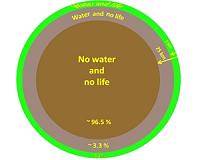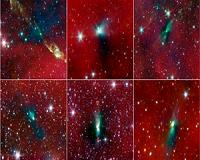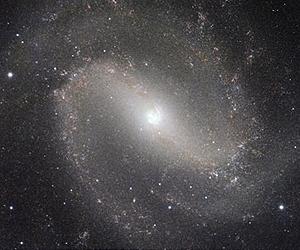|
 Why NASA Keeps A Close Eye On Sun's Irradiance
Why NASA Keeps A Close Eye On Sun's IrradianceWashington DC (SPX) May 27, 2010 For more than two centuries, scientists have wondered how much heat and light the sun expels, and whether this energy varies enough to change Earth's climate. In the absence of a good method for measuring the sun's output, the scientific conversation was often heavy with speculation. By 1976, that began to change when Jack Eddy, a solar astronomer from Boulder, Colo., examined historical records of sunspots and published a seminal paper that showed some century-long variations in solar activity ar ... read more |
. |
|
|
Free Space, Earth, Energy And Military Newsletters - Delivered Daily |
| . | . |
| .. |
Exoplanetary System Offers Clues To Disturbed Past Baltimore MD (SPX) May 25, 2010
Baltimore MD (SPX) May 25, 2010Astronomers are reporting the discovery of a planetary system way out of tilt, where the orbits of two planets are at a steep angle to each other. This surprising finding will impact theories of how multi-planet systems evolve, and it shows that some violent events can happen to disrupt planets' orbits after a planetary system forms, say researchers. "The findings mean that future studies ... more NASA Fixes Bug On Voyager 2  Moscow, Russia (RIA Novosti) May 25, 2010
Moscow, Russia (RIA Novosti) May 25, 2010NASA's Voyager 2 spacecraft has resumed sending science data from deep space after engineers fixed a bug that had garbled the information it was sending back to Earth, a leading project scientist said on Monday. "The science data format is working," Edward Stone told RIA Novosti. The science data coming from Voyager 2 had been unintelligible since April, but last week engineers at NA ... more Evidence For Why We Exist  Batavia IL (SPX) May 24, 2010
Batavia IL (SPX) May 24, 2010Scientists at the Fermi National Accelerator Laboratory may have found an answer for a basic cosmological question. If the universe is composed of matter and anti-matter, then how do we exist? When matter and anti-matter particles collide in high-energy collisions, they turn into energy and produce new particles and antiparticles. At the Fermilab proton-antiproton collider, scientists obse ... more |
.. |
 Water, Water Everywhere, But Not All Drops Have Life  How Binary Stars May Form  Instant online solar energy quotes Solar Energy Solutions from ABC Solar |
.. |
|
|
Free Space, Earth, Energy And Military Newsletters - Delivered Daily |
|
|
. |
 Clear New View O A Classic Spiral
Clear New View O A Classic SpiralParis, France (ESO) May 24, 2010 ESO is releasing a beautiful image of the nearby galaxy Messier 83 taken by the HAWK-I instrument on ESO's Very Large Telescope (VLT) at the Paranal Observatory in Chile. The picture shows the galaxy in infrared light and demonstrates the impressive power of the camera to create one of the sharpest and most detailed pictures of Messier 83 ever taken from the ground. The galaxy Messier 83 (eso0825) is located about 15 million light-years away in the constellation of Hydra (the Sea Serpent). It span ... read more |
| The contents herein, unless otherwise known to be public domain, are Copyright 1995-2010 - SpaceDaily. AFP and UPI Wire Stories are copyright Agence France-Presse and United Press International. ESA Portal Reports are copyright European Space Agency. All NASA sourced material is public domain. Additional copyrights may apply in whole or part to other bona fide parties. Advertising does not imply endorsement, agreement or approval of any opinions, statements or information provided by SpaceDaily on any web page published or hosted by SpaceDaily. Privacy statement |
| Previous Issues | May 27 | May 26 | May 25 | May 24 | May 21 |